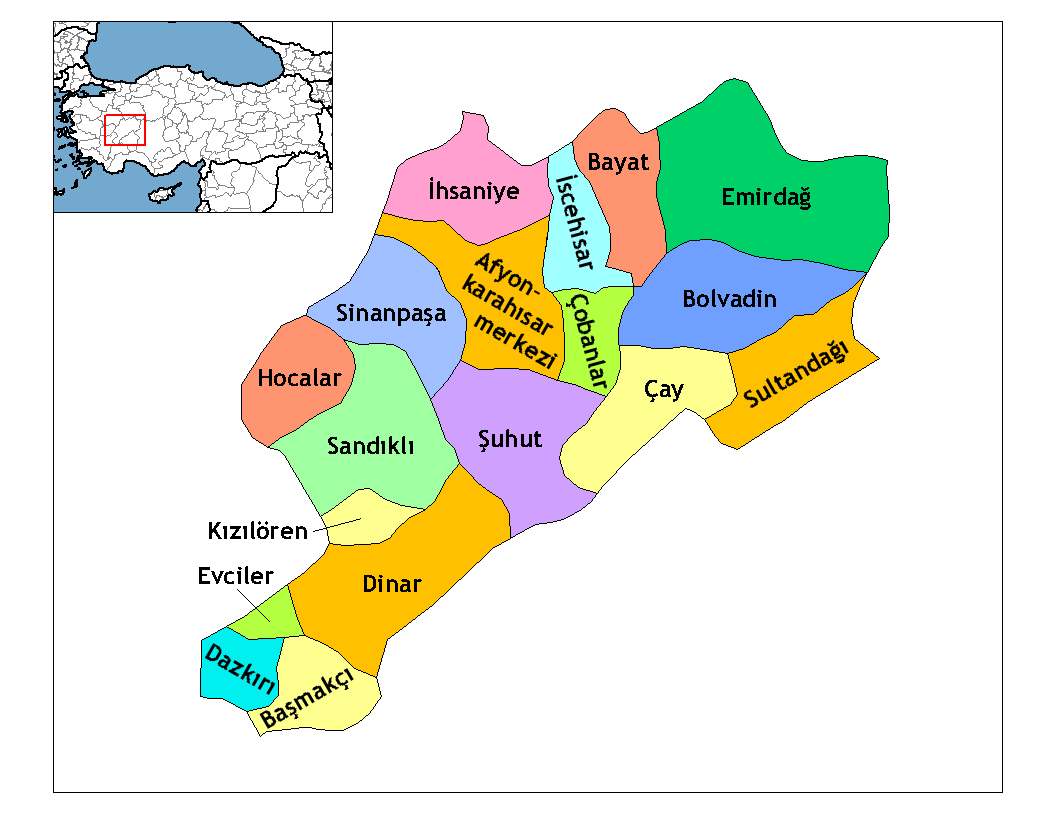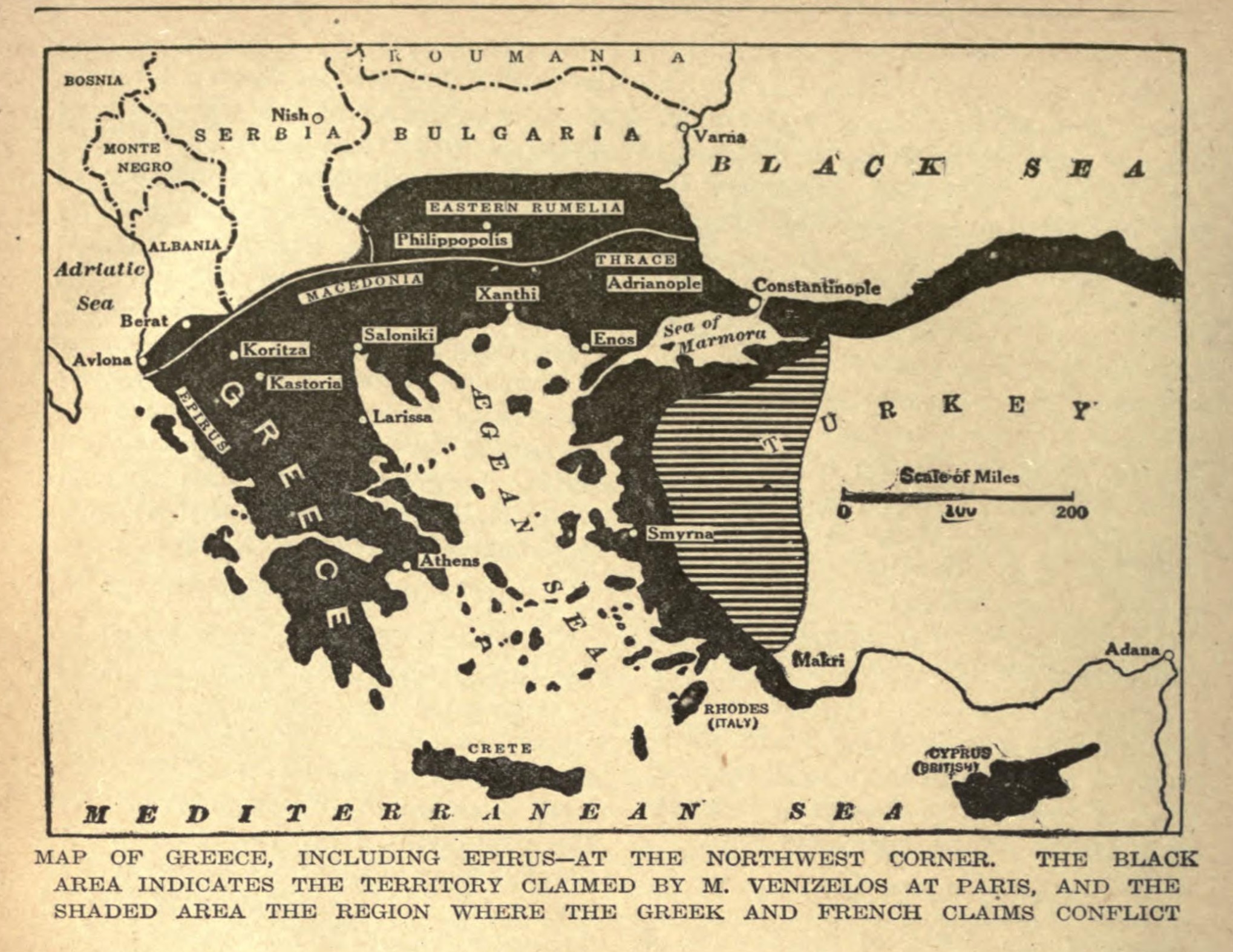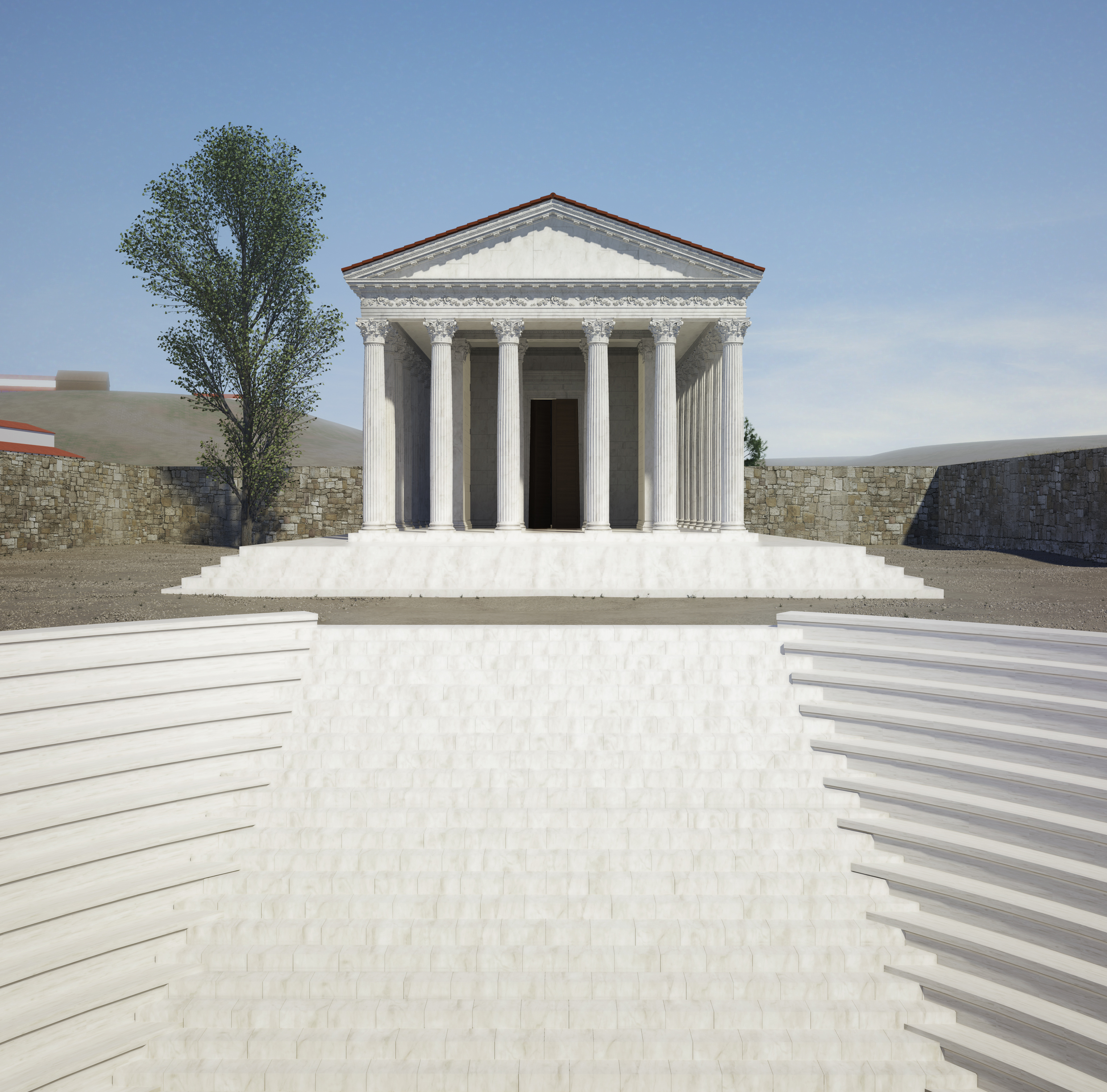|
Polatlı
Polatlı (formerly Ancient Greek: Γόρδιον, Górdion and Latin: Gordium) is a municipality and district of Ankara Province, Turkey. Its area is 3,618 km2, and its population is 128,378 (2022). It is 80 km west of the Turkish capital Ankara, on the road to Eskişehir. Its elevation is 853 m. Geography Polatlı is situated at the heart of the high Anatolian Plateau, a large steppe covered with grass. Far from the coast, it has a typical steppe climate. The winters are cold and generally snowy, the summers are hot and dry. Spring and autumn are the wettest seasons (especially the former). Polatlı is one of the most productive agricultural districts in Turkey and is best known for its cereal production, especially barley and wheat. Polatlı is one of Turkey's largest grain stores. Sugar beet, melon and onion are also grown. History Ancient settlement The ancient Phrygian capital Gordion is 10 km from the city of Polatlı. On the outskirts of Polatli there ... [...More Info...] [...Related Items...] OR: [Wikipedia] [Google] [Baidu] |
Gordion
Gordion (Phrygian language, Phrygian: ; ; or ; ) was the capital city of ancient Phrygia. It was located at the site of modern Yassıhüyük, Polatlı, Yassıhüyük, about southwest of Ankara (capital of Turkey), in the immediate vicinity of Polatlı district. Gordion's location at the confluence of the Sakarya River, Sakarya and Porsuk River, Porsuk rivers gave it a strategic location with control over fertile land. Gordion lies where the ancient road between Lydia and Assyria/Babylonia crossed the Sakarya River, Sangarius river. Occupation at the site is attested from the Early Bronze Age () continuously until the 4th century CE and again in the 13th and 14th centuries CE. The Citadel Mound at Gordion is approximately 13.5 hectares in size, and at its height habitation extended beyond this in an area approximately 100 hectares in size. Gordion is the type site of Phrygians, Phrygian civilization, and its well-preserved destruction level of is a chronological linchpin in the ... [...More Info...] [...Related Items...] OR: [Wikipedia] [Google] [Baidu] |
Battle Of Sakarya
The Battle of the Sakarya (), also known as the Battle of the Sangarios (), was an important engagement in the Greco-Turkish War (1919–1922). The battle went on for 21 days from August 23 to September 13, 1921, close to the banks of the Sakarya River in the immediate vicinity of Polatlı, which is today a district of the Ankara Province. The battle line stretched over 62 miles (100 km). It is also known as the Officers' Battle () in Turkey because of the unusually high casualty rate (70–80%) among the officers. Later, it was also called '' Melhâme-i Kübrâ'' (Islamic equivalent to Armageddon) by Mustafa Kemal Atatürk. The Battle of the Sakarya is considered as the turning point of the Turkish War of Independence. The Turkish observer, writer, and literary critic İsmail Habip Sevük later described the importance of the battle with these words: Background The Greek offensive, under King Constantine I as Supreme Commander of the Greek Forces in Asia, was committed ... [...More Info...] [...Related Items...] OR: [Wikipedia] [Google] [Baidu] |
Gordion Museum 0851
Gordion ( Phrygian: ; ; or ; ) was the capital city of ancient Phrygia. It was located at the site of modern Yassıhüyük, about southwest of Ankara (capital of Turkey), in the immediate vicinity of Polatlı district. Gordion's location at the confluence of the Sakarya and Porsuk rivers gave it a strategic location with control over fertile land. Gordion lies where the ancient road between Lydia and Assyria/Babylonia crossed the Sangarius river. Occupation at the site is attested from the Early Bronze Age () continuously until the 4th century CE and again in the 13th and 14th centuries CE. The Citadel Mound at Gordion is approximately 13.5 hectares in size, and at its height habitation extended beyond this in an area approximately 100 hectares in size. Gordion is the type site of Phrygian civilization, and its well-preserved destruction level of is a chronological linchpin in the region. The long tradition of tumuli at the site is an important record of elite monumentali ... [...More Info...] [...Related Items...] OR: [Wikipedia] [Google] [Baidu] |
Ankara Province
Ankara Province (, ) is a province and metropolitan municipality of Turkey with the capital city Ankara. Its area is 25,632 km2, and its population is 5,782,285 (2022). History The site of the modern city has been home to settlements by many historic Anatolian civilizations in antiquity and classical times, including Phrygians, Lydians, Persians and Alexander the Great, Romans, and Galatians. The city of Ankara became a fortified stronghold of the Byzantines; it fell to the Seljuk Turks and later the Ottoman Empire. It was finally chosen by Mustafa Kemal Atatürk and the Turkish National Movement as the site of the provisional government and the Turkish parliament in 1920, and in 1923 as the capital city of the newly established Republic of Turkey. Geography Ankara is mostly in the Central Anatolia region, and partly in the Black Sea region. Ankara has mountain forests to its north, and the dry plain of Konya to its south. The province is irrigated by the ... [...More Info...] [...Related Items...] OR: [Wikipedia] [Google] [Baidu] |
Districts Of Turkey
The Provinces of Turkey, 81 provinces of Turkey are divided into 973 districts (''ilçeler''; sing. ''ilçe''). In the Ottoman Empire and in the early Turkish Republic, the corresponding unit was the ''qadaa, kaza''. Most provinces bear the same name as their respective provincial capital (political), capital districts. However, many urban provinces, designated as greater municipalities, have a center consisting of multiple districts, such as the provincial capital of Ankara Province, Ankara province, Ankara, The City of Ankara, comprising nine separate districts. Additionally three provinces, Kocaeli, Sakarya, and Hatay have their capital district named differently from their province, as İzmit, Adapazarı, and Antakya respectively. A district may cover both rural and urban areas. In many provinces, one district of a province is designated the central district (''merkez ilçe'') from which the district is administered. The central district is administered by an appointed pr ... [...More Info...] [...Related Items...] OR: [Wikipedia] [Google] [Baidu] |
King Midas
Midas (; ) was a king of Phrygia with whom many myths became associated, as well as two later members of the Phrygian royal house. His father was Gordias, and his mother was Cybele. The most famous King Midas is popularly remembered in Greek mythology for his ability to turn everything he touched into pure gold and this came to be called the ''golden touch'', or the ''Midas touch''. The legends told about this Midas and his adopted father Gordias, credited with founding the Phrygian capital city Gordium and tying the Gordian Knot, indicate that they were believed to have lived sometime in the 2nd millennium BC, well before the Trojan War. However, Homer does not mention Midas or Gordias, while instead mentioning two other Phrygian kings, Mygdon of Phrygia, Mygdon and Otreus. Midaeum was presumably named after him, and this is probably also the Midas that according to Pausanias (geographer), Pausanias founded Ancyra (today known as Ankara). Another King Midas ruled Phrygia in t ... [...More Info...] [...Related Items...] OR: [Wikipedia] [Google] [Baidu] |
Sakarya River
The Sakarya (; ; ; ) is the third longest river in Turkey. It runs through the region known in ancient times as Phrygia. It was considered one of the principal rivers of Asia Minor (Anatolia) in Greek classical antiquity, and is mentioned in the ''Iliad'' and in ''Theogony''. Its name appears in different forms as Sagraphos, Sangaris, or Sagaris. In ''Geographica'', Strabo wrote during classical antiquity that the river had its sources on Mount Adoreus, near the town of Sangia in Phrygia, not far from the border with Galatia, and flowed in a very tortuous course: first in an eastern direction, then toward the north, then in a northwesterly direction and finally to the north through Bithynia into the Euxine (Black Sea). Pseudo-Plutarch wrote that a man named Sagaris often disdained the mysteries of the Mother of the Gods, frequently deriding her priests. She struck him with madness, and he flung himself into the river Xerobates, which from then on was called Sagaris. Part of ... [...More Info...] [...Related Items...] OR: [Wikipedia] [Google] [Baidu] |
Republican People's Party
The Republican People's Party (RPP; , CHP ) is a Kemalism, Kemalist and Social democracy, social democratic political party in Turkey. It is the oldest List of political parties in Turkey, political party in Turkey, founded by Mustafa Kemal Atatürk, the List of presidents of Turkey, first president and founder of the modern Turkey, Republic of Türkiye. The party is also cited as the founding party of modern Turkey. Its logo consists of the The Six Arrows, Six Arrows, which represent the foundational principles of Kemalism: republicanism, reformism, Secularism in Turkey, laicism, populism, nationalism, and statism. It is currently the second largest party in Grand National Assembly of Turkey, Grand National Assembly with 135 MPs, behind the ruling conservative Justice and Development Party (Turkey), Justice and Development Party (AKP). The political party has its origins in the various Association for Defence of National Rights, resistance groups founded during the Turkish W ... [...More Info...] [...Related Items...] OR: [Wikipedia] [Google] [Baidu] |
National Oceanic And Atmospheric Administration
The National Oceanic and Atmospheric Administration (NOAA ) is an American scientific and regulatory agency charged with Weather forecasting, forecasting weather, monitoring oceanic and atmospheric conditions, Hydrography, charting the seas, conducting deep-sea exploration, and managing fishing and protection of marine mammals and endangered species in the US exclusive economic zone. The agency is part of the United States Department of Commerce and is headquartered in Silver Spring, Maryland. History NOAA traces its history back to multiple agencies, some of which are among the earliest in the federal government: * United States Coast and Geodetic Survey, formed in 1807 * National Weather Service, Weather Bureau of the United States, formed in 1870 * United States Fish Commission, Bureau of Commercial Fisheries, formed in 1871 (research fleet only) * NOAA Commissioned Corps, Coast and Geodetic Survey Corps, formed in 1917 The most direct predecessor of NOAA was the Enviro ... [...More Info...] [...Related Items...] OR: [Wikipedia] [Google] [Baidu] |
Greco-Turkish War (1919–1922)
The Greco-Turkish War of 1919–1922 was fought between Greece and the Turkish National Movement during the partitioning of the Ottoman Empire in the aftermath of World War I, between 15 May 1919 and 14 October 1922. This conflict was a part of the Turkish War of Independence. The Greek campaign was launched primarily because the western Allies, particularly British Prime Minister David Lloyd George, had promised Greece territorial gains at the expense of the Ottoman Empire, recently defeated in World War I. Greek claims stemmed from the fact that Western Anatolia had been part of Ancient Greece and the Byzantine Empire before the Turks conquered the area in the 12th–15th centuries. The armed conflict started when the Greek forces landed in Smyrna (now İzmir), on 15 May 1919. They advanced inland and took control of the western and northwestern part of Anatolia, including the cities of Manisa, Balıkesir, Aydın, Kütahya, Bursa, and Eskişehir. Their advance was chec ... [...More Info...] [...Related Items...] OR: [Wikipedia] [Google] [Baidu] |
Pessinus
Pessinus () was an Ancient city and archbishopric in Asia Minor, a geographical area roughly covering modern Anatolia (Asian Turkey). The site of the city is now the modern Turkish village of Ballıhisar, in a tributary valley of the Sakarya River on the high Anatolian plateau at 950 m above sea level, 13 km from the small town of Sivrihisar. Pessinus remains a Catholic (formerly double) titular see. Description The temple area As yet, the temple area, which was excavated between 1967 and 1972, is the only well-studied area of Pessinus. It was studied thoroughly by M. Waelkens (current director of Sagalassos excavations) in the 1980s and between 2006 and 2012 by Verlinde (Ghent University), who built on the findings of the former to analyze and reconstruct the architecture of the Corinthian peripteral temple, of which only the massive foundations remain. Investigations led to several observations, such as the Tiberian date (25-35 AD) of the cult building and its ... [...More Info...] [...Related Items...] OR: [Wikipedia] [Google] [Baidu] |
Gordian Knot
The cutting of the Gordian Knot is an Ancient Greek legend associated with Alexander the Great in Gordium in Phrygia, regarding a complex knot that tied an oxcart. Reputedly, whoever could untie it would be destined to rule all of Asia. In 333 BC, Alexander was challenged to untie the knot. Instead of untangling it laboriously as expected, he dramatically cut through it with his sword. This is used as a metaphor for using brute force to solve a seemingly-intractable problem. Legend The Phrygians had no king, but an oracle at Telmissus (the ancient capital of Lycia) decreed that the next man to enter the city driving an ox-cart should become king. A peasant farmer named Gordias drove into town on an ox-cart and was immediately declared king. Out of gratitude, his son Midas dedicated the ox-cart to the Phrygian god Sabazios (whom the Greeks identified with Zeus) and tied it to a post with an intricate knot of cornel bark (''Cornus mas''). The knot was later described by Ro ... [...More Info...] [...Related Items...] OR: [Wikipedia] [Google] [Baidu] |










